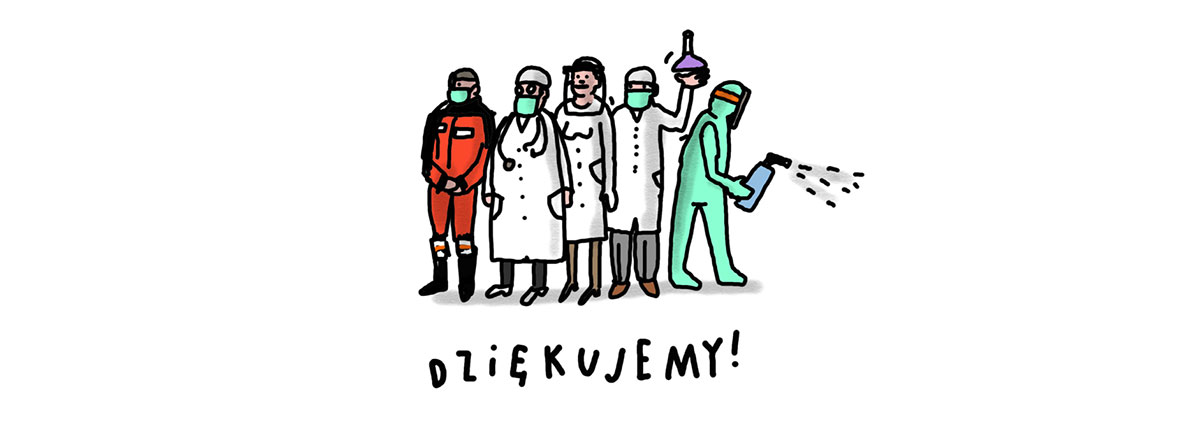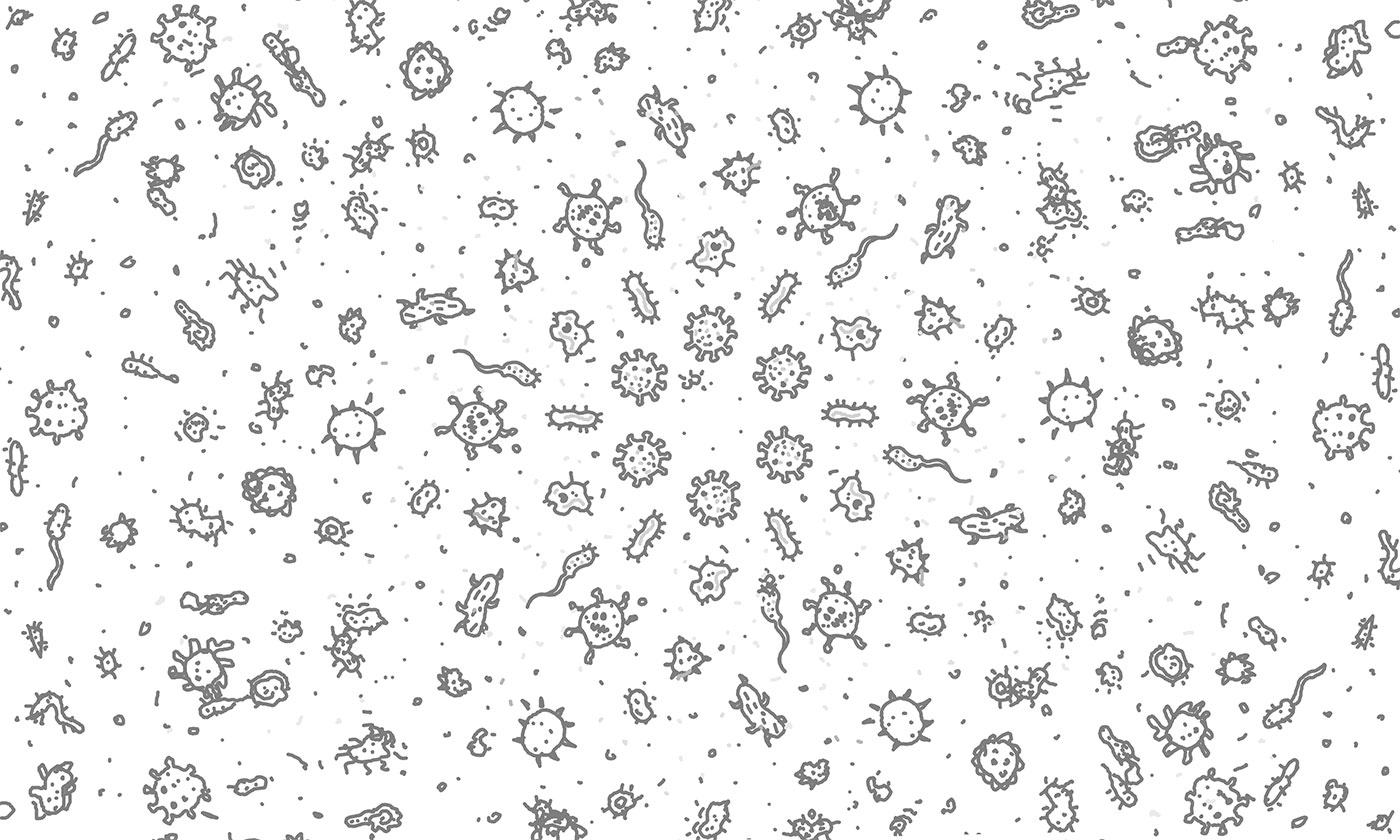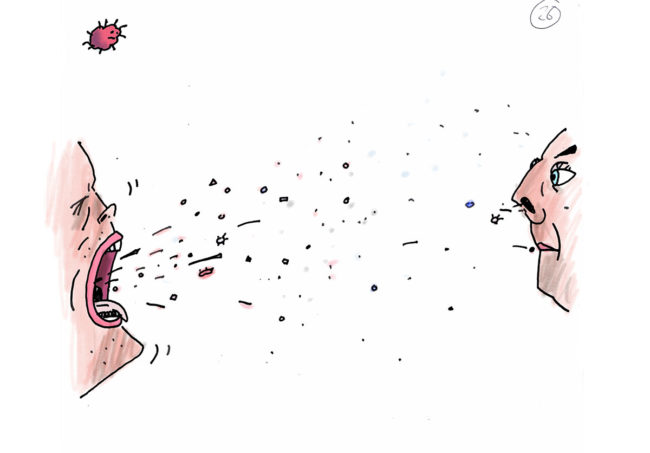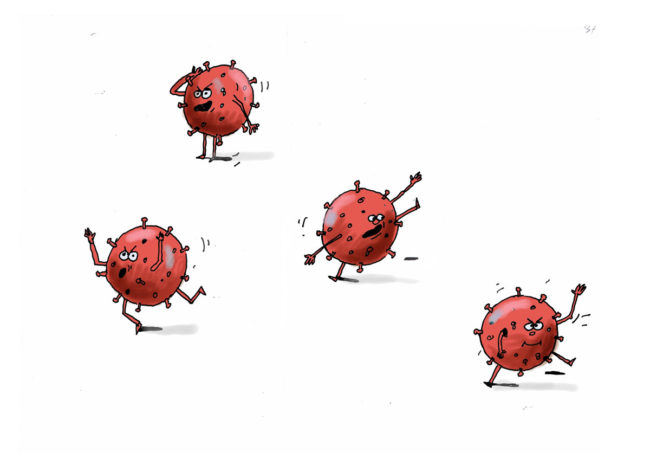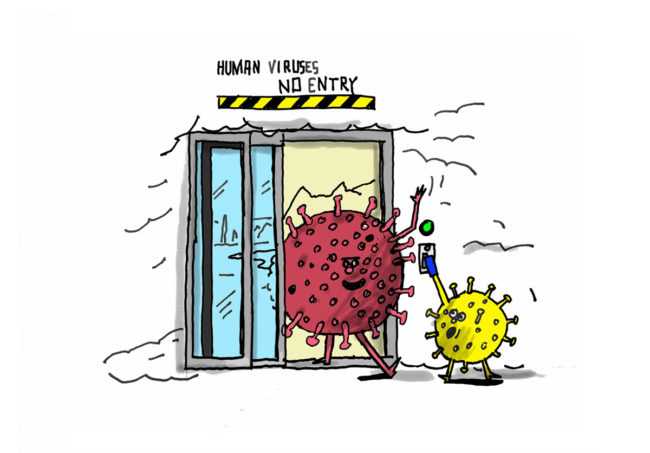Interview with Boguś Janiszewski and Max Skorwider by Mateusz M. Bieczyński
M.B.: What is your book about?
B.J.: The book is about the virus and our intimate relationship with it. So not really about it itself but our relationship with it and our attitude towards it…
M.S.: Basically our book is about what contributed to its origin: the viruses. First of all the aim is to understand how the virus emerges, how it develops and how to get rid of it. The question is what a virus actually is… The book also tells about the immune-defence system. It differentiates viruses and bacterias.
B.J.: As a matter of fact, according to certain scientists viruses are one of the most common and most varied “entities” in the natural world. I say “entities” as, for these scientists, a virus isn’t something that lives. We depict it mostly as some sort of a driving force, an active agent – it attacks, infects, spreads – while it is not a form of life. In fact, it’s a certain form of information which can interact with a living organism and wreak havoc in it. Surprisingly enough, it can also transform as expected, like the viruses used in the process of plant modification. According to growers sick tulips are better-looking, as they obtain unnatural characteristics. Therefore a virus is essentially an experience that affects all creatures. A human being is no exception here.
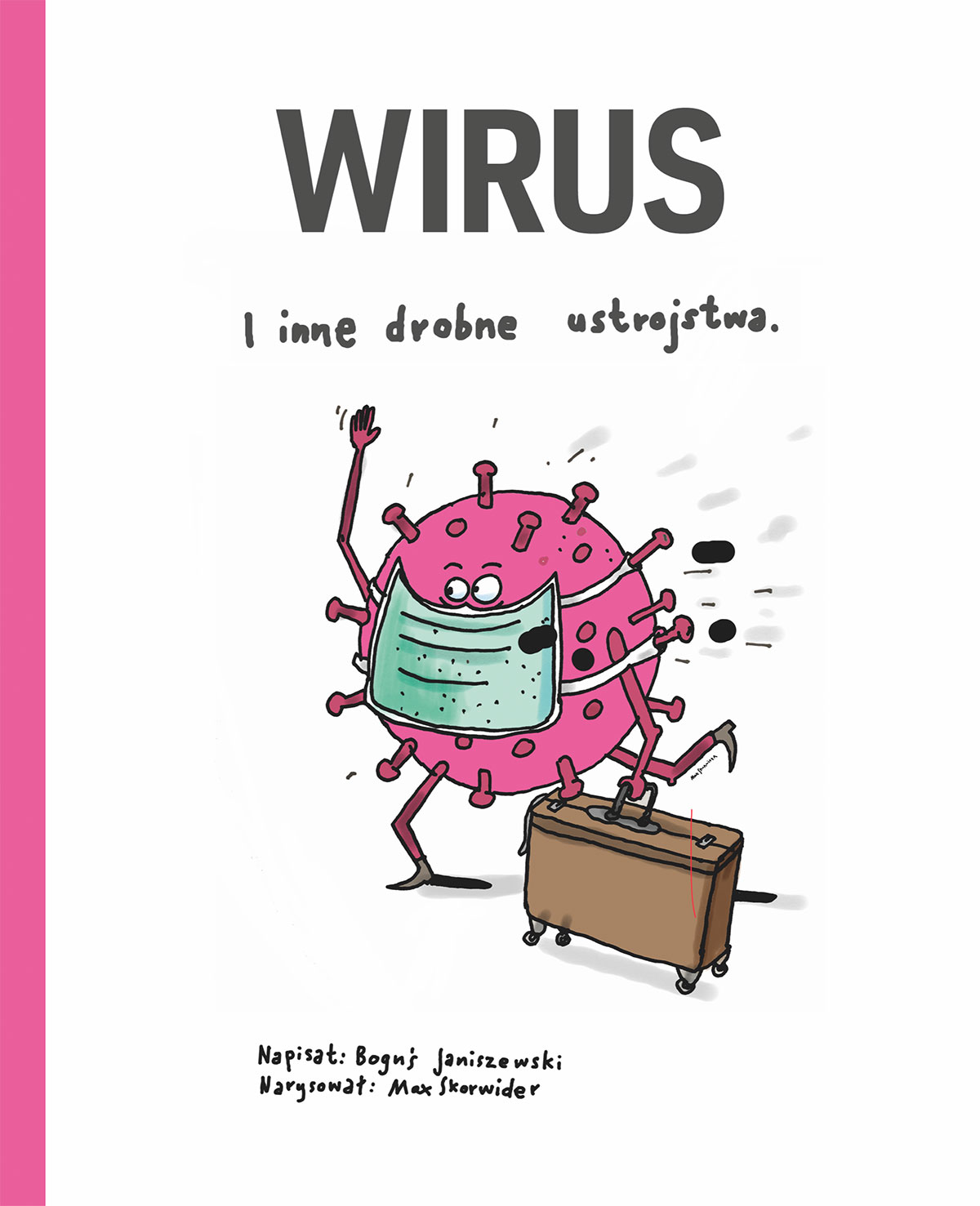
M.B.: Is the publication a response to the current situation?
B.J.: Far from it! (laughter) Yes! Definitely! The book is a reply to the new thing that has appeared and concerns us all. It actually is a form of a response. However, when we began writing and illustrating it, we didn’t really realize how strongly that “thing” would affect us…
M.S.: I’m not sure if the book is a reply or rather an attempt to broaden our and the readers’ knowledge about what a virus is. Contrary to widespread belief, viruses aren’t something new. They have accompanied humankind from the very beginning.
B.J.: If viruses are common, by creating this book we meant above all to calm our young readers. We assume that acquiring knowledge soothes us. We become more aware of dangers, therefore we are less afraid of them, or else – our fear is more rational. In that sense the aim of the book is to familiarize the described topic.
M.S.: The method of familiarizing is the personification of the virus. This strategy enables us to “bring it closer” to the recipient. Thus Covid-19 inspired us to write this book. The idea was additionally reasoned by the lack of similar publications on Polish book market. We created a book that we would have liked to read ourselves. We explain in a simple way what a virus is. Covid-19 is its main character. We presented different situations associated with the epidemic: there is the case of Wuhan, as well as the personification of the virus traveling to other countries. They are represented both by the text and the illustrations.
B.J.: It’s important to note that the book is not an instruction manual explaining how to wash hands. At this point we need to distance ourselves from simple didactics, that’s beside the point. Just like in our previous publications, we don’t want to describe and illustrate obvious situations but explain a problem.
M.S.: Viruses are small. An improbable amount of them would fit in a pinhead. It exceeds our notion. The understanding is even tougher because of the scale which we don’t have reliable points of reference for. The personification of the virus in the described stories and supporting the text by illustrations enables to overcome the problem coming from the fact that viruses cannot be seen or felt. The verbal and visual description is a reply for its ephemeralness and fleetingness.
When answering the question if the book is a response for the current situation it is also worth mentioning that the situation itself was a significant impulse to write it; it gave us a kind of a punch and offered time to peacefully work in the privacy of our homes. The creative process was a form of a remedy on its own. It enabled us to adjust to the new situation to some extent, to go through it in the cognitive sense.
M.B.: What is the intended audience of the book?
M.S.: It’s addressed to readers aged seven and older. We don’t establish any upper limitations.
B.J.: From the start of my cooperation with Max we aim to talk with children, both in the layer of text and illustration, yet at the same time we cast a net on adults. We are trying to create Shrek in a book form. It is addressed to children, but we also want it to make a good reading for their parents. The form of narration results from the respect to children. We believe that the youngest need to be treated as serious parties in the discussion – in our opinion there are no difficult topics and issues. You just need to adapt the used language. For instance, this spring we are publishing a book about childhood cancer.
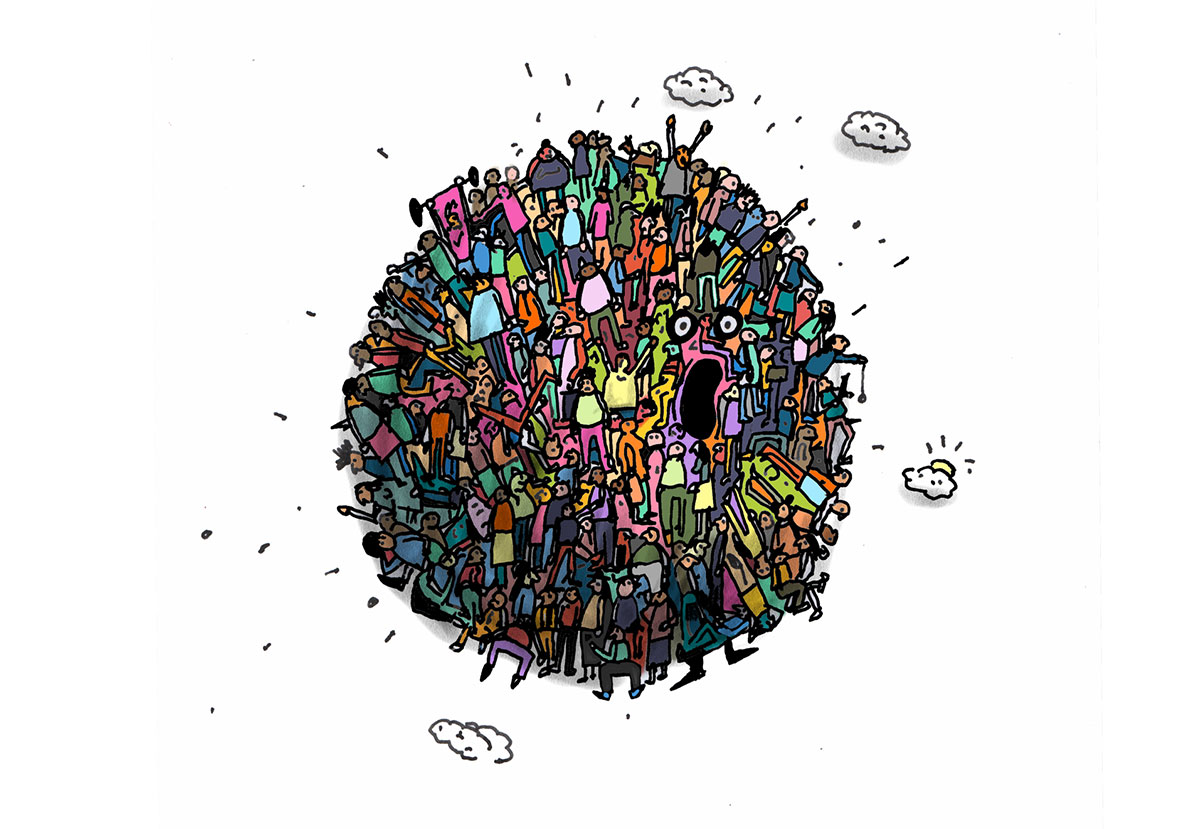
M.B.: Though the book on viruses is addressed to children, I acquired a lot of new information myself while reading it. Did you wonder during the process of preparing this publication that, as a matter of fact, non specialists know very little about bacterias and viruses?
M.S.: Non specialists are a little like a babe in the woods. The viruses are surrounded by legends, rumors, conspiracy theories, fake news and other forms of manipulation. We tried to separate these distortions of the content from the essence of the topic and rely on credible sources.
B.J.: It’s not a book on prevention and we are not sponsored neither by the Ministry of Health nor Education. What binds us is the deep faith that it’s worth to know. No more, no less.
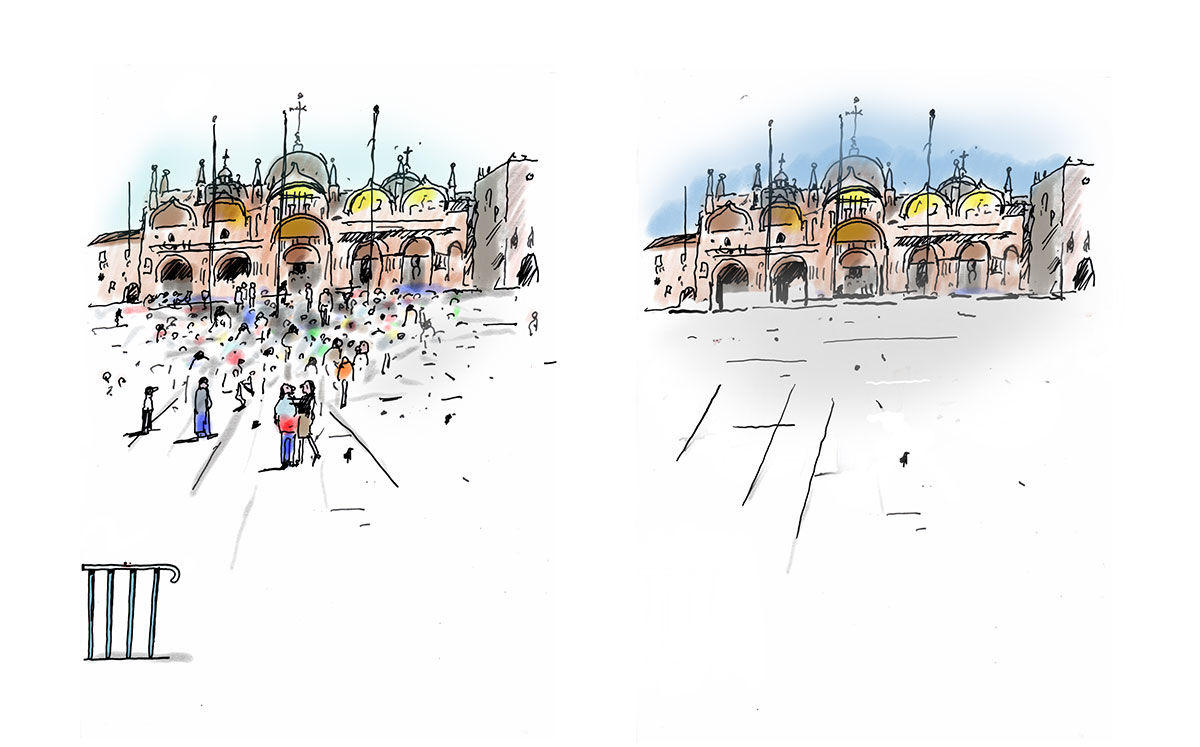
M.B.: Did creating the content of the book require a lot of preparatory studies?
B.J.: No! The book is copied from the Internet (laughter). Seriously, the book is mainly based on the material found on the net. The primary cause is that no noteworthy publication on this topic has been released yet. During writing I referred to books on the field of virology, though I must admit that it was my first publication in which the dominant source was the Internet. That’s why I really wanted specialists to check it. A medical doctor watched over the emerging content, and when the book was ready I consulted two scientists from the Institute for Biotechnology of Polish Academy of Sciences in Poznan.
Anyway, a funny anecdote is associated with it. The scientists prepared the book review in the word editor in the breaks of working on the tests for coronavirus. Our communication was thus literally interrupted when the equipment or the test material were supplied. My interlocutors informed: “Mister Boguś, a half-hour break, the samples are here”. They called back later. So we can say that we received first-hand information. We were in touch with the best source…

M.B.: Of the coronavirus…?
B.J.: Yes (laughter). We can say that, though it also shows that we don’t discover new worlds. This is not our intention. I have always said that my craft is to detect and share topics and motives for a child’s imagination.
M.S.: That’s also the role of the illustrations. The visual part of the book is in some way my discussion with Boguś, with what he sees when he writes. One of us has licentia poetica, while the other – artistica.
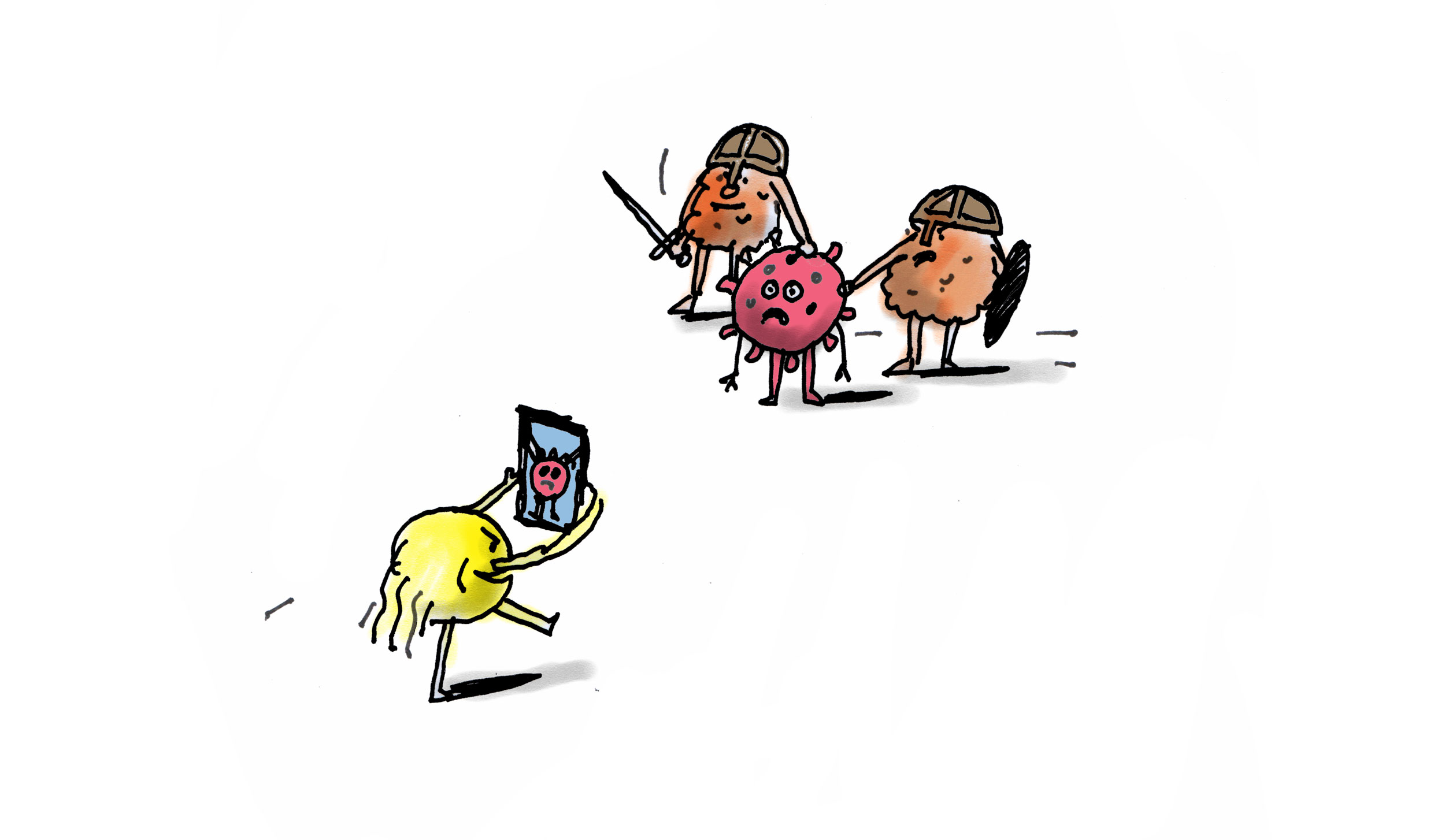
M.B.: Are the illustrations based on the clinical images of the virus?
M.S.: I have a full stock of viruses’ forms and shapes. I choose the ones that serve as the best communication tool for the intended content and my idea of it. A lot of covid illustrations appear in the media. There are many visual shortcuts, but to be honest we can’t be entirely sure how these viruses look like or what colour are they. We base on a certain convention, even as far as scientific images are concerned. Thanks to the experience gained from previous books we developed a certain style that gives me freedom as an illustrator. It enables me to transfer what Boguś wrote into the visual layer. It’s difficult to verbally explain the graphic artist’s experience. I’m not fond of entirely verbalizing illustrations. My domain is to create, not talk about them.
M.B.: What useful information can the reader find in the book?
B.J.: First of all he can learn how this thing named virus operates, what it actually is. He can also find out that the virus is in fact some kind of data that can transform into something dangerous, even fatal in contact with cells. He can discover how infection occurs. The whole trick with the new virus is that our body doesn’t know how to recognize it yet. There’s hope though that it will develop this response: antibodies.
The book also delivers information on vaccines. It explains what such a vaccine is, what an important invention it is and how many people it saved.
What I found out – and it’s a paradox – is the fact that all the unpleasant conditions connected with the virus infection are only indirectly linked to the activity of the virus. In reality it’s our body that destroys itself in response to the presence of the virus. The job of chemical compounds called natural killers, which every human being has within, is to neutralize foreign bodies, but practically they also neutralize the infected human cells. They work self-destructively. The book is also interesting because the reader can learn where particular symptoms come from, for example an increased body temperature means the activation of a body, a cough is a mechanical attempt to get rid of the viruses from the organism, as well as a cold. That’s why in a viral infection it’s pointless to attack symptomps. Taking antibiotics means acting against our own immune system.
M.B.: The book is filled with verbal and visual humour. Did you think about its final tone when you started working on it? The situation in the world seems serious and you joke…
M.S.: The book embraces a humorous concept as its role is to warn, not to frighten. It should present what the humankind struggles with from time to time, not to admonish and bring the recipient down. After all black humour exists, and it saves our race in emergency situations. Our next book is about cancer. Naughty humour helps to reduce the distance and makes difficult topics approachable. Obviously we’ve currently found ourselves in an unusual situation, forced to stay indoors, where are rituals are limited to the minimum. Often we can’t meet our family, which is hard. However, it also helps us unwind and concentrate on important things, like this book. It’s crucial to use this proper time to acquire the book’s content, and humour is a useful tool here.
B.J.: Yes, we joke and we are not at all ashamed of it. For life itself is fun. The phenomenon of our species confirms it. A human being is a kind of a joke. His behaviours are often grotesque, filled with funny situations. That’s why we don’t treat reality too seriously, as the reality itself often treats us too seriously. Humour is thus a sort of resistance. On the other hand introducing laughter is a step towards our young readers. Contrary to adults, children form a group that hasn’t developed seriousness yet, or I may as well say, it’s a group that hasn’t yet lost a lightweight approach and an inclination to be playful. Children are ruthless and carefree, it’s their way to deal with fear. We shouldn’t be concerned. They are going to play virus games when they go back to school anyway.
M.B.: Do you have any guidelines for the readers about how to use your book?
M.S.: I believe the book has a certain chronology put in the narration, however this question should be answered by Boguś. Personally I can say that the virus seems to be the foretaste of what may threaten us in the future. Our ignorance on climate change caused the awakening of different things, for example of those hidden in the permafrost, which turned out not to be so permanent and melts, revealing its interior. I don’t want to be a bad oracle, but the book may also be important in the future when such situations recur – many forecasts predict it. From our point of view the book is dedicated to direct the reader’s attention to more important issues than presidential election or politics. It doesn’t comment on politics itself, though it sets it in a wider context of things that matter and things that matter more. The raised topics are the problems of the world that need to be solved in the first place.
B.J: The content develops sequentially, although the way of using it is of secondary importance. There is full flexibility in it. Besides, we have very good experience as far as our readers’ opinions is concerned and we’ve repeatedly received super-pleasant feedback that somebody’s son locked himself in the room with our book and didn’t come out until he finished it. In the case of this publication I also wish that the reader will swallow it in one go and won’t be able to put it down until he is done. It’s a story with a hidden, adult message. Discover, understand, find out how things work, and implicitly it says: don’t thoughtlessly follow the dictations to keep a 2 metres distance and wash your hands all the time, but realize why you are doing it.
